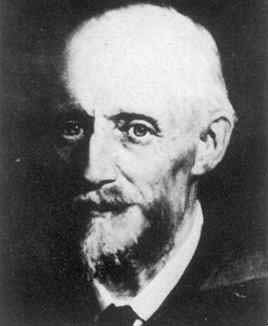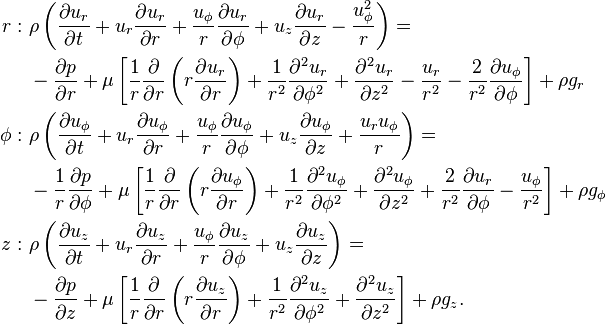Osborne Reynolds
claimed by Charlene Walton (cwalton8) 12.05.2015
Osborne Reynolds (August 23 1842 – February 23 1912) was the pioneer and main contributor of fundamental fluid dynamics. His scientific research on flow contributed to the Reynolds number, Reynolds analogy, Naiver-Stokes equation, Reynolds stress and Reynolds decomposition in order to predict the speed and mass of fluids at a given period of time.

Personal Life
Early Life
Osborne Reynolds was born in Belfast, Ireland to Osborne Reynolds Sr. He followed the footsteps of his father and attended Queen's college and graduated in 1867 as the seventh wrangler in mathematics. He soon after worked in London with Lawson and Masergy but focused more on his academic research and teaching a year later when he was elected the first professor of engineering at Owen's College. During his first years as a chair, Osborne career began rocky. During his time as chair, Osborne marries Charlotte Jemima Chadwick, who, unfortunately dies from peritonitis during child birth. After her death, Osborne steps down as chair and focuses more on his teaching, research and his newly born son. During his initial years as a teacher, Osborne was forced to focus on "out of door" physics (i.e. tails of comets, solar corona,electric properties of clouds), since he did not have a physics research lab available to him to conduct research. This initial focus on "out of door" sparked his interest in fluid dynamics and hydrostatics. His focuses shifted from calculating and observing tails of comets to formation of raindrops and understanding how tree trunks burst after being struck by lighting. His observational studies had lead to the formation of his first significant study on the link between friction and heat transfer. His interest progressed on fluids and flow centered around surface waves deep in the ocean and fluid pipes used in machinery. However, his lack of a physics laboratory limited his scientific contributes. It was not until 1887, after much convincing of the Senate, that Reynolds was able to obtain his own research laboratory. It was in his laboratory that he was able to formulate equations and experiments that are well known today.
Scientific Career
In 1877, Osborne was elected fellow of the Royal Society due to his scientific contributions and equations. In 1895, years after Reynolds obtained his scientific research laboratory, Reynolds adopts Reynolds decomposition and Reynolds stress equations. Reynolds decomposition and Reynolds stress equations all seemed from his initial observation studies on friction and heat transfer in order to determine the velocity of a fluid body. The equations help determine the speed of fluids and determine the direction to create a well understood velocity profile of that fluid. His smaller observational and experimental studies created the foundation of his late studies and late paper on determining the mechanical equivalence of heat.
Final Years
During his final years, Osborne wrote and published a paper on film lubrication based on his frictional studies. He later embarked on a large-scale experiment to determine the mechanical equivalent of heat for any given object. HIs final paper, The Sub-Mechanics of the Universe, Vol. 3, focused on creating a general study and understanding of the mechanics of everyday objects. However, the paper was not publish until after his death. In 1905, Osborne retired from his teaching and researching position at Owens College. In February 1912, Osborne Reynolds died at the age of 70.
Scientific Contributions
Reynolds scientific research and studies contributed to the formation of Reynolds number, a known number that can help determine whether a fluid is under turbulent or laminar flow. Reynolds decomposition, Reynolds stress, Reynolds-averaged Navier–Stokes equations, Reynolds' dilatancy, Reynolds operator all came from his scientific studies and observations. The foundation of creating velocity profiles and understanding the flow of mass and fluids in a given surface area begin with these equations and values.
Mathematical Equations
Reynolds Analogy:
Reynolds Number:
Reynolds Transport Theorem:
Naiver-Stokes Equation:
Historical Context
One of the initial major limitations of Reynolds's work was the lack of physics laboratories available to teachers. His initial work, along with many other physicists, focused on "out of door" mathematical observations. It wasn't until after he received his scientific lab that Reynolds was able to conduct his mechanical heat transfer studies. Even then, his work got little recognition in the scientific community since fluid dynamics had small recognition at the time. Scientific discoveries at the time focused more on large scale contributions to physics. Most of Reynolds work gained recognition in the mid-late 20th century when fluid dynamics studies surfaced.
Connectedness
Reynolds number is a major contributor of thermodynamics and heat transfer. It explains how fluids in a given boundary layer will react and creates a velocity profile to predict flow. As a biomedical engineering major, I consistently use Reynolds number and Naiver stokes equation in order to determine the flow of blood in the circulatory system. Fluid dynamics is one of the universal topics used by a multitude of majors including aerospace engineering, mechanical engineering and chemical engineering. It provides vital information about the flow of fluids that we use in everyday life. An example of a real world application of Reynolds number can be seen in hemodynamics. Naiver stoke equations are often used when looking at the flow of blood in patients that have a plaques in their arteries. It helps determine how the speed of the blood has changed with this blockage and can be used to determine what their risks are for hemorrhaging.
See also
Further reading
Gresham, R.M. "So who was this Osborne Reynolds guy, anyway?" Tribology and Lubrication Technology, September 2014, 70(9):22-23.
External links
https://en.wikipedia.org/wiki/Osborne_Reynolds
https://en.wikipedia.org/wiki/Fluid_dynamics
https://www.youtube.com/watch?v=Wa-RSKv7SRU&list=PL0jAiXLfdUJBAoYmevhgcao62CBX9fIlF&index=2
http://www-groups.dcs.st-and.ac.uk/history/Biographies/Reynolds.html
http://www.britannica.com/biography/Osborne-Reynolds
References
https://en.wikipedia.org/wiki/Osborne_Reynolds
https://www.youtube.com/watch?v=Wa-RSKv7SRU&list=PL0jAiXLfdUJBAoYmevhgcao62CBX9fIlF&index=2
http://www-groups.dcs.st-and.ac.uk/history/Biographies/Reynolds.html



